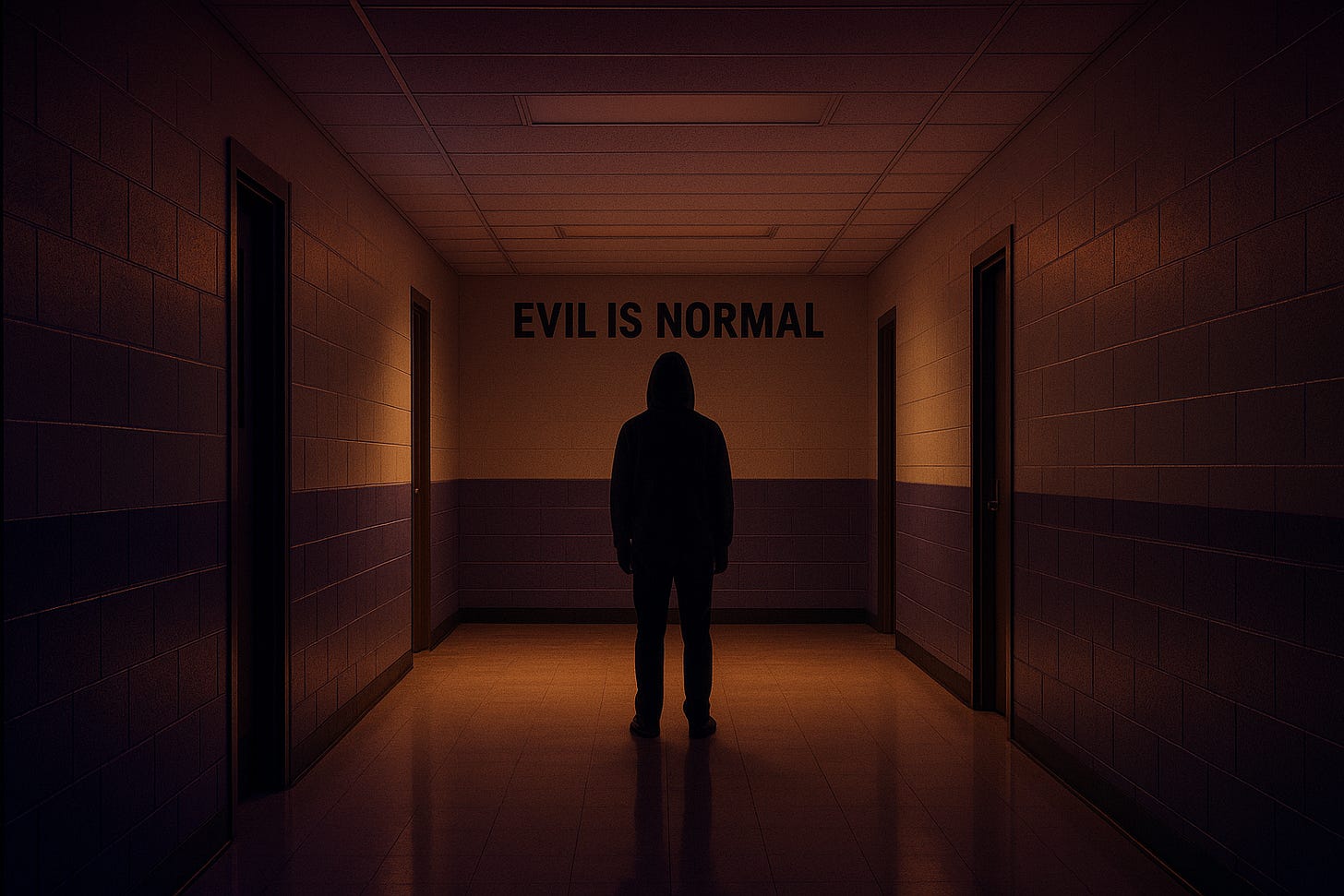Is Rape Being Accepted As Part of the College Experience?
When a culture starts treating rape as “part of college,” the institution is already failing.
Colleges love to sell freedom…
New ideas, new friends, new theories, and new horizons.
But walk the halls long enough and you’ll hear a darker sales pitch whispered between headlines and press releases: this is just how it is.
Parties - Rape - Power - Silence…
Then another student is assaulted, and the cycle restarts.
That normalization is not only grotesque, it’s dangerous. The data collected over the years has made it clear as day that college campus sexual violence is real, recurring, and too often hidden in the margins.
If you haven’t already read Parts I & II of ‘When Silence Protects the Predator’, you should check them out.
At leading research universities, roughly 13% of students reported non-consensual sexual contact by force or inability to consent since enrolling.
That isn’t a rumor; it’s the Association of American Universities’ multi-campus survey of more than 180,000 students.
And still, most cases never reach the police.
According to the U.S. Bureau of Justice Statistics, about 80% of student rapes/sexual assaults go unreported. In about 80% of cases, the offender is someone the victim knows, a classmate, ex, friend, or acquaintance.
If you’re wondering why the official campus numbers look “low,” remember, the metrics you see are often the tip of an under-reporting iceberg.
Federal law (the Clery Act) requires schools to disclose campus crime, but even that system breaks down. In 2024, the U.S. Department of Education levied the largest Clery fine in history, $14 million, against Liberty University for misclassifying and failing to disclose crimes, including sexual assaults. That wasn’t a rounding error; it was a systemic failure.
Two truths we must hold at once
Truth #1
Sexual assault on campus is under-reported and intolerably common.
The AAU and BJS findings above aren’t conjecture. They reflect a reality where students, assaulted mainly by people they know, often don’t report because they doubt they’ll be believed, don’t want the social fallout, or fear nothing will change.
Truth #2:
False allegations ruin lives, and due process matters.
The best research suggests confirmed false reports to police average around 5%, with credible ranges typically between 2% and 10%, depending on definitions and methods.
A meta-analysis by Ferguson & Malouff pegs confirmed false reports at ~5.2%, while summaries from the National Sexual Violence Resource Center cite the 2–10% band.
Motivations for false reports vary, including alibi, revenge, attention, mental-health factors, and, yes, sometimes to cover “regret sex” or infidelity.
None of that minimizes the suffering of real victims; it emphasizes why thorough, unbiased investigations are essential for justice to be real for both survivors and the falsely accused.
Refusing either of these truths, pretending assaults are rare or pretending false accusations never happen, produces the same outcomes of cynicism, silence, and more harm.
How normalization takes root
Normalization creeps in quietly:
Language softens the blow. “Incidents” replace crimes. “Under investigation” replaces action.
Statistics get sanitized. Under-reporting makes campuses look safer on paper than they are in life.
Institutions protect brand over bodies. When compliance failures draw record fines, it’s proof that the system will sometimes skip accountability to preserve image.
The result?
Students begin to treat danger like background noise.
Parents assume “someone’s on it.” Administrators issue another memo, and predators calculate correctly that time and fog will work in their favor.
How do we fix this?
For universities
Radical transparency. Post real-time, plain-English dashboards of reports, responses, and outcomes. Independent audits when patterns appear.
Harden the environment. Cameras, access controls, lighting, battle-buddy programs, and evidence-preservation protocols where students live and walk.
Separate care from discipline. Survivors need confidential, trauma-informed care that isn’t contingent on a formal report. Accused students need prompt notice and a fair, evidence-driven process.
External oversight for repeat failures. When dorms or departments show patterns, bring in outside investigators and publish the results.
For students
Learn and use the fastest reporting routes (campus + local police). Document everything.
Pair survivor services with evidence preservation (SANE exams, timelines, messages).
Organize. Public pressure changes budgets faster than press releases ever will.
For parents
Ask challenging questions on tours: reporting rates, third-party audits, how many cases lead to sanctions, and what changed after the last cluster of reports. If answers are vague, that is your answer.
For all of us
Drop the fatalism. Treating rape as “part of college” is moral surrender. It is not a rite of passage; it is a cultural choice, and culture is built or broken by policy, budgets, and the courage to confront ugly truths.
College Rape Is Not Normal
Colleges become prison-like when fear, silence, and institutional self-protection take priority over human safety and real justice.
We honor survivors when we make reporting safe and effective, we protect the wrongly accused when we demand evidence and due process, and we deter future predators by proving that every credible report triggers swift, transparent consequences.
The day we stop treating campus rape as inevitable is the day we start making it rare.
- Zac Small



